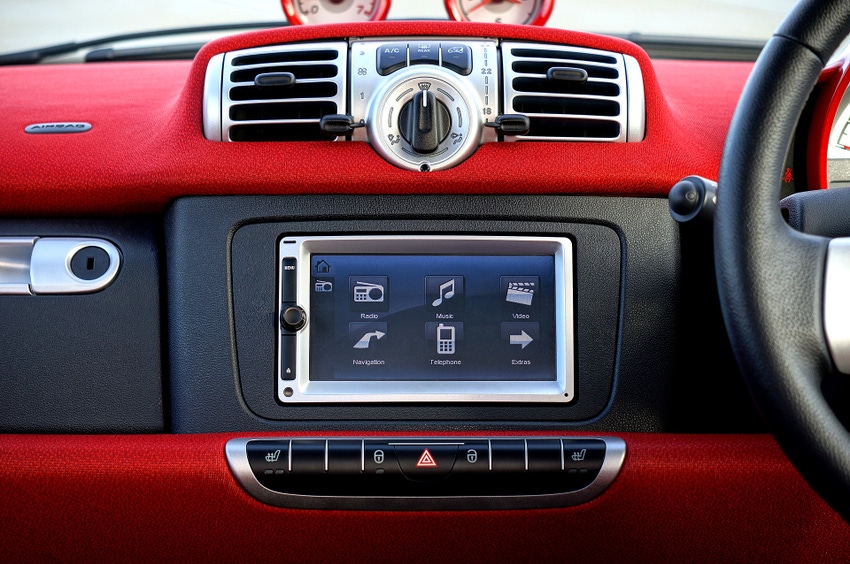The Big, Hidden Questions of Connected Cars
There are questions around connected cars that many engineers and experts aren't considering.
June 1, 2017

 Last December, the Department of Transportation (DOT) proposed a rule that would make vehicle-to-vehicle V2V connectivity a requirement for all new cars. Data from the DOT states this widespread connectivity could reduce non-impaired crashes by up to 80 percent, underscoring the great promise of this automotive advancement. Automakers and data providers are already on board, and will push such rulings forward because there’s benefits in this data for both companies and for consumers in terms of safety and convenience.
Last December, the Department of Transportation (DOT) proposed a rule that would make vehicle-to-vehicle V2V connectivity a requirement for all new cars. Data from the DOT states this widespread connectivity could reduce non-impaired crashes by up to 80 percent, underscoring the great promise of this automotive advancement. Automakers and data providers are already on board, and will push such rulings forward because there’s benefits in this data for both companies and for consumers in terms of safety and convenience.
There's no doubt that adding connectivity to cars has its benefits. According to a 2016 study from global management consulting firm, McKinsey, data from connect cars could reach a revenue potential of $1.5 trillion by 2030. This connectivity will have a transformative effect on both consumer and commercial vehicles, well beyond previous advancements such as on-board diagnostics or airbags. Employers such as cable companies and delivery firms are very eager to further implement connectivity to monitor drivers and improve safety.
In the coming years connected cars will be a standard, acting as both hotspots and sending out information to other vehicles, toll booths, and various other sensors. But managing all of this data and the related technology poses a considerable challenge for automakers. They must design durable and sophisticated systems for an audience that is used to a smartphone’s simplicity. While there is great promise with connected cars, there are additional challenges, even beyond the technical and storage-related issues, that will need resolution before widespread adoption:
1.) What About Network Strain?
Connectivity in modern cars will be updated through firmware, with the car’s computers updating information and processes in the background, similar to a mobile device. For example, refinements to a car’s self-parking capabilities could be sent through firmware-over-the-air (FOTA).
OEMs manufacturing cars are putting in place sensors to collect and share vast amounts of information about collisions, warranties, maintenance, and dozens of other metrics. As they start sending this data to the cloud instead of internal storage, there will be further strain placed on networks and cloud storage providers. There will also be demands from consumers who want access to this information, since it is their vehicle and their behaviors that are producing the data. Companies will need to navigate these demands and find ways to present data in digestible formats to consumers while still leveraging value from all of this information.
2.) What About Privacy?
Connect cars have already been hacked to take over their control systems. But what about the data being stored and transmitted as well? For example, one of the touted advantaged of connected cars will be access to collision data. This information is typically held on a SIM card, and can provide insurance companies or law enforcement with critical information about the car’s speed and other metrics. Will privacy standards and security be enough to safeguard connected car data, especially as consumers continue to use their personal devices in ways intertwined with their vehicles?
3.) Can the Development Cycle Be Satisfied?
Automotive products are also on a long production and development cycle compared to mobile devices. With a smartphone, updates can be completed instantly, but the components of the vehicle require more involved work, or can’t reasonably be updated without additional expense. The customers’ expectations for the latest features will have to be managed by the realities of car production.
With this in mind one must also consider the distributor level as well. The sales staff at dealerships will need advanced training on all of the tech functionality of modern cars in order to offer a satisfactory customer experience. It also begs the question of who will bear the costs of connectivity in terms of data usage? Will consumers add the car as a “device” to their existing mobile plans, or will the costs be added to car payments/leases?
What do you see as some unintended benefits and challenges of connected cars? Share your thoughts with us in the comments!
2017 Call for Speakers Smart Manufacturing Innovation Summit at Atlantic Design & Manufacturing. Designed for industry professionals looking to overcome plant and enterprise-level manufacturing challenges using IT-based solutions. Immerse yourself in the latest developments during the two-day, expert-led Smart Manufacturing Innovation Summit. You'll get the latest on the factory of future including insights into Industrial IoT and IIoT applications, predictive maintenance, intelligent sensors, security, and harmonizing IT/OT. June 13-15, 2017. Register Today! |
David Zimmerman, CEO of LC Technology International, Inc., has been in the hardware/software industry for over 30 years, specifically in the data recovery software market for 18 years.
[Main image source: Public Domain]
About the Author(s)
You May Also Like

.jpg?width=300&auto=webp&quality=80&disable=upscale)


